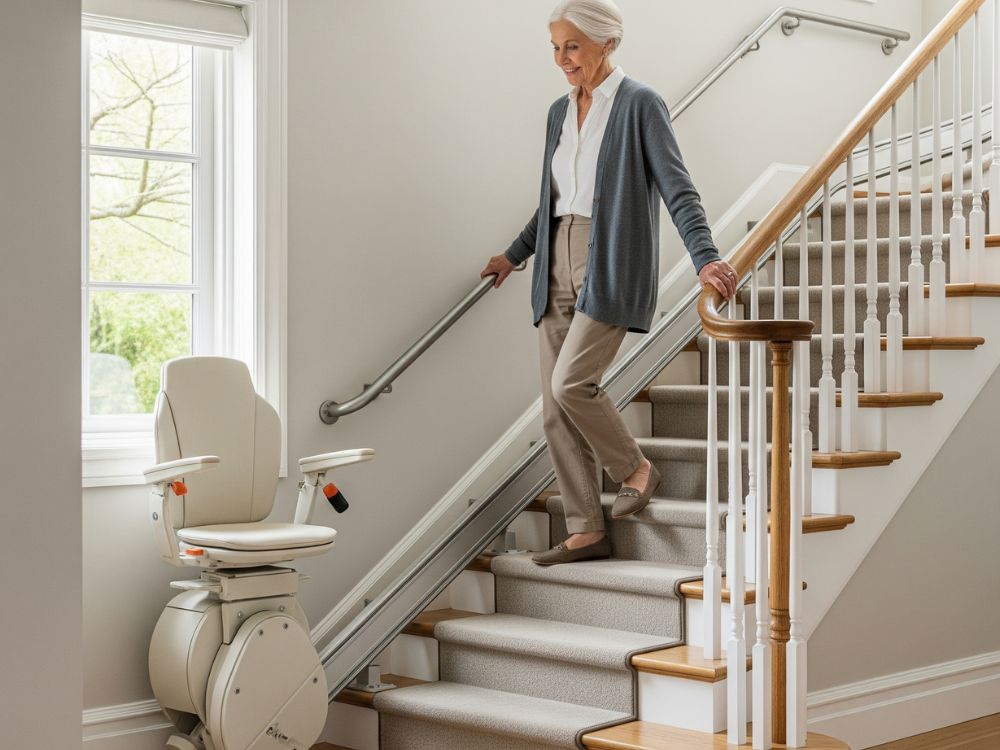
Aging at Home: 7 Simple Modifications for a Safer House
You've spent years perfecting your home. You know exactly where the good coffee mug is, you know which drawer sticks a little, and you could probably navigate to the kitchen with your eyes closed. In fact, that's exactly what you do sometimes at night, and so far, it's worked out pretty well.
But let's be honest, your home probably wasn't designed with ergonomics in mind. Architects and designers rarely think about the details that truly matter in the long run. So today, a few strategic adjustments can transform your space into an optimized version, more comfortable and better suited to your current reality.
The Bathroom Deserves Better
Let's talk about the bathroom. It's where you have to manage balance on slippery surfaces, which naturally creates risky situations. Installing grab bars between 33 and 36 inches from the floor near the toilet and in the shower is simply a matter of intelligent design and comfort.
Modern grab bars have nothing to do with institutional equipment from the past. There are options that integrate perfectly with any decor. It's a functional element that adds stability where you need it, like having a good handle on a heavy door.
Automatic Lighting So You're Never Caught Off Guard
Motion-sensor night lights are one of those innovations that truly simplify life. You get up at night, the light activates automatically with a soft intensity, then turns off by itself. No more searching for the switch in the dark or lighting up the entire house.
It's also an elegant solution from an energy and practical standpoint. They consume little power, don't disturb sleep, and they add that touch of smart technology that makes daily life more seamless. Place them strategically in hallways, near the bedroom, and in the bathroom.
And the Rugs? Do We Keep Them or Toss Them?
Those rugs and mats you like so much? They can become problematic on smooth surfaces. Unfixed rugs slip, especially on hardwood or ceramic. The solution is straightforward: secure them firmly to the floor or opt for non-slip rugs with an adhesive backing.
In the shower, adhesive mats are essential. Yes, they require a bit of maintenance and aren't always the most aesthetic, but their function is clear: provide reliable grip on a wet surface. It's a practical choice that significantly reduces the risk of slipping.
Storage at Human Height
The days when you easily grabbed objects from the top shelves may be over, but that's not a limitation, it's an opportunity to reorganize intelligently. Everything you use regularly should be between your waist and shoulders. It's basic ergonomics, the kind of principle professional designers have been applying for a long time.
For occasions when you need to access high shelves, a stable step stool with a handrail is an effective tool. No question of improvising with a chair or wobbly stool. Proper equipment gives you the access you need without compromising safety. It's as simple as that.
The Phone, That Old Limited Friend
Having a phone in every room seemed like a good solution a few years ago. The problem is that a landline doesn't help you if you fall in the hallway or basement. The distance between you and the device becomes an insurmountable obstacle in an emergency situation.
The real solution is a portable device that goes with you everywhere. In the garden, in the basement, in any room of the house. Because emergencies don't choose their time or place, and relying solely on landlines is like betting that nothing will ever happen far from a phone.
The Little Extra That Changes Everything
Even with all these smart adjustments, having a device like the SmartSAFE PLUS is a bit like having insurance. You hope you'll never need it, but you're awfully glad to have it when it counts. It's waterproof, so you can wear it in the shower without worry. Its GPS works everywhere, even in the garden or basement where the signal is sometimes temperamental. And it lasts three days without recharging, which saves you the daily anxiety of "did I charge my thing?"
All these small changes together don't transform your home into a medical institution. They just make it more pleasant to live in, more adapted to who you are now. It's still your home, just with a few practical improvements that allow you to enjoy it fully, without unnecessary stress and without sacrificing your independence.
